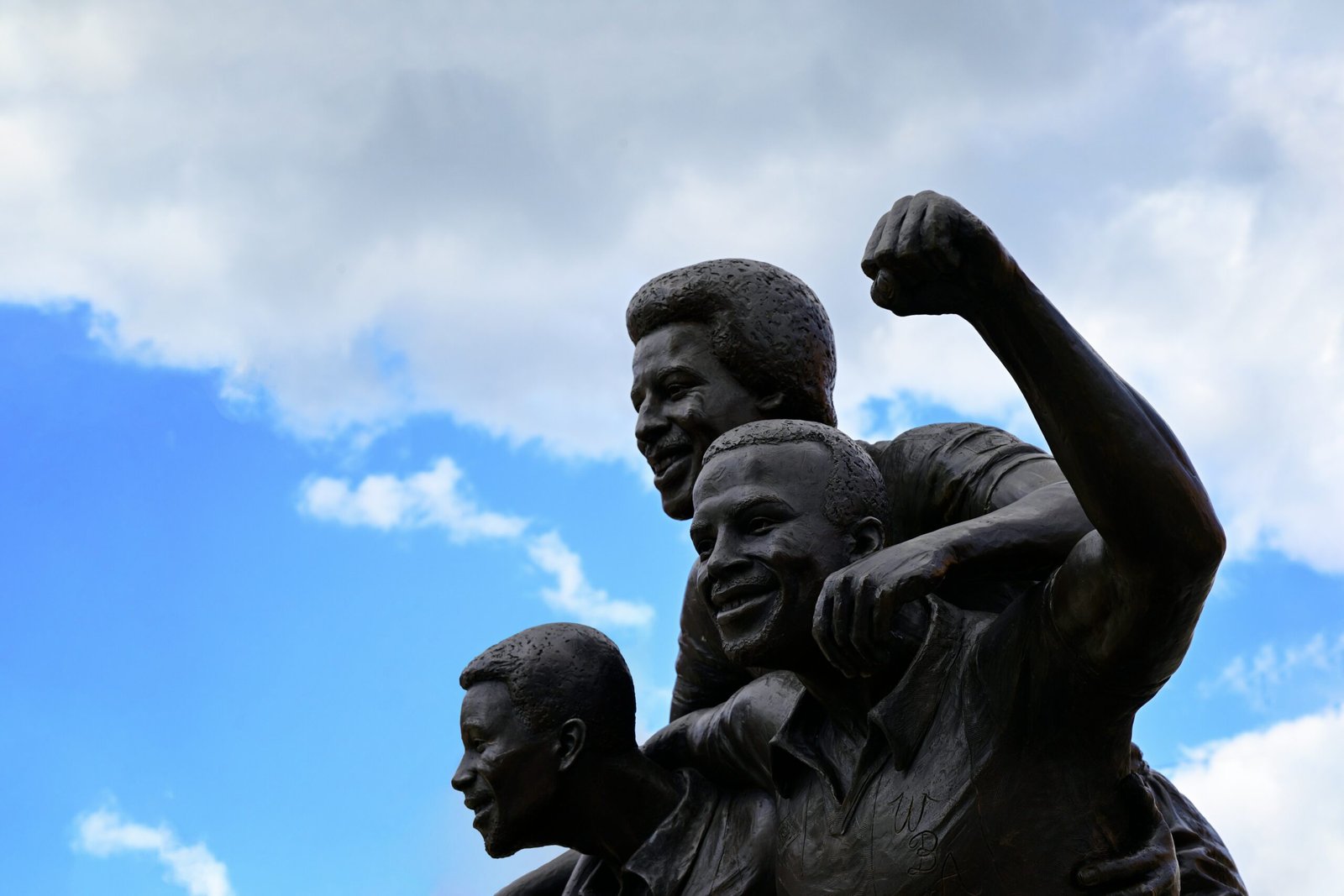10 Famous Black Mathematicians Who Made History
June 2, 2025

With recent significant achievements being made by American, British, and Indian scholars, among others, you might be wondering, “Have we made any big achievements, and are there any famous black mathematicians?”
Well, grab some popcorn and sit tight, because we’re about to blow your mind (and give you something big to brag about). From calculating space trajectories to breaking academic barriers, Black mathematicians have shaped science and technology for centuries. This is a celebration of 10 trailblazers whose contributions transformed mathematics and science.
1. Benjamin Banneker (1731–1806)
Imagine growing up in 18th-century Maryland with almost no formal schooling, and still teaching yourself advanced algebra, trigonometry and even astronomy. That was Benjamin Banneker. Benjamin Banneker was the son of an African American mother and a formerly enslaved father. To study, he borrowed every book he could find. By 1753, he had constructed a wooden clock, powered by a pendulum and carved gears, and you may not believe it, but that clock ticked accurately for decades.
In the 1790s, Banneker computed almanacs predicting sunrise, moon phases and eclipses. His letters to Thomas Jefferson challenged ideas about the human race and intellect. He also toured Europe’s leading scientific works in libraries, then adapted their methods at home. His almanacs were bestsellers, and he became a symbol of what passion plus persistence can achieve, even without a university degree, all while looking like us.
2. Elbert Frank Cox (1895–1969)
Elbert Cox was born in Evansville, Indiana, and excelled at Indiana University, winning fellowships in pure math. In 1925, he became the first Black person in the world to earn a PhD in mathematics, with a thesis on “polynomial solutions of difference equations”, at Cornell University. These equations are important for modelling everything from population growth to financial trends.
After graduation, Cox spent decades teaching at historically Black colleges like Howard and Morgan State. He mentored students who faced the very barriers he had broken down, building programmes that still thrive today. Beyond his research, he is remembered for proving that academic excellence knows no colour.
So hey! If Polynomials are your strong point, rest assured, you’re walking a great path! If you struggle with polynomial equations, then Roots to Routes Academy can change that. See how here.
3. David Blackwell (1919–2010)
David Blackwell’s story starts in Centralia, Illinois, where he earned his bachelor’s at age 20. After studying his master’s at the University of Illinois, he completed his PhD in 1941 on dynamic programming. After, he taught at Howard University before joining the faculty at UC Berkeley, becoming the first Black tenured mathematics professor in the United States.
Blackwell’s work in game theory and Bayesian statistics gave us tools to make optimal decisions under uncertainty, think economics, computer science and even ecology. The Blackwell–Shapley theorem remains the foundation of strategic decision models. After being elected to the U.S. National Academy of Sciences in 1965, he inspired generations of statisticians with both his pioneering research and his warmth as a mentor.
So, if you love mathematical theorems, keep at it. Who knows, the next generation could talk about you the same way we’re talking about David.
4. J. Ernest Wilkins Jr. (1923–2011)
You may want to buckle your seatbelts for this one, we’re about to talk about the black boy wonder.
At just 13, Ernest Wilkins Jr. entered the University of Chicago, earning his bachelor’s in mathematics at 17. And by 19? He had a PhD from the same institution, focusing on the theory of chronic differential equations. A National Science Foundation fellowship then took him to Princeton, where his work on high-energy physics laid groundwork for nuclear reactor shielding.
He later served on President Eisenhower’s Atoms for Peace programme, advising on safety protocols for nuclear power. Over his career, Wilkins published over 60 papers in mathematical physics and became a symbol of how youthful curiosity, when nurtured, can change the trajectory of science.
Oh! In case you were wondering, President Eisenhower is the brain behind the Eisenhower Matrix.
5. Kelly Miller (1863–1939)
Kelly Miller, he grew up in Winnsboro, South Carolina, and graduated from Howard University in 1886. He became the first Black graduate student in mathematics at Johns Hopkins University, studying algebraic curves and projective geometry in the late 1800s. Although he never completed his doctorate there, his work on algebraic systems earned respect among his peers.
After a while, he wanted more, so he used statistical methods to analyse housing, health and education disparities facing Black communities. As a professor at Howard, then dean of the College of Arts and Sciences, he also blended mathematics and sociology, showing us how quantitative tools can illuminate social injustices.
6. Euphemia Haynes (1890–1980)
Time for the ladies :p
Euphemia Haynes was born in Washington, D.C. and completed her BA in mathematics at Smith College in 1914. In 1943, she became the first Black woman in the U.S. to earn a PhD in mathematics. She did so at the Catholic University of America, with a dissertation on algebraic theories of matrices.
She taught in D.C. public schools for more than 40 years, eventually serving on the school board. Haynes fought tirelessly for equal resources and curricula, mentored student teachers of all races and championed community engagement. Her combination of research expertise and hands-on teaching made her a true pioneer in maths education.
7. Marjorie Lee Browne (1914–1979)
Marjorie Browne grew up in Detroit and earned her BA in maths from Talladega College in Alabama. In 1949, she completed a PhD in combinatorial topology at the University of Michigan, one of the first Black women ever to do so. Her thesis explored how complex shapes can be broken down into simpler components, laying a foundation for modern computational topology.
She returned to North Carolina A&T State University, where she built their mathematics department, secured research funding and guided students into graduate studies. Browne’s legacy lives on in the many Black mathematicians she mentored.
8. Dorothy Vaughan (1910–2008)
Dorothy Vaughan studied mathematics at Wilberforce University before joining NACA, the predecessor to NASA, in 1943. She was hired as a “human computer”, and she quickly became an expert in complex flight-path calculations (Yup! She was that good and appreciated, even as a black woman) . When NASA introduced FORTRAN programming in the 1960s, Vaughan taught herself and her team the new language, ensuring their vital work continued.
She led the West Area Computing unit and was among the first Black supervisors at NASA. Her leadership helped launch America’s early space missions, proving that applied mathematics can literally send us soaring.
9. Evelyn Boyd Granville (1924–2023)
Evelyn Granville earned her BA from Smith College and in 1949 became the second Black woman in the U.S. to receive a PhD in mathematics from Yale, studying differential geometry. She joined IBM and worked on orbital trajectory calculations for the Vanguard project before later consulting for NASA on Apollo missions.
Her precise algorithms helped ensure that spaceships found and returned from the Moon safely. Granville also taught at Fisk University and California State University, Los Angeles, nurturing students who went on to careers in both academia and aerospace.
10. Katherine Johnson (1918–2020)
Here’s another black person who was considered a human computer (if anything, this proves that you are capable of so much more, and are very intellectual. Remember it!).
Katherine Johnson graduated with the highest praise (that’s summa cum laude in Latin, feel free to flex the phrase) from West Virginia State College in 1937. In 1953, she joined NACA, where her hand-computed trajectories were critical for Alan Shepard’s 1961 flight and John Glenn’s Friendship 7 mission in 1962. When NASA switched to electronic computers, Glenn famously insisted that “our black mathematician” do the final check, so he could trust the numbers.
Johnson’s work is numerous and stretches over decades, from Project Mercury to the Space Shuttle programme. She won the Presidential Medal of Freedom in 2015. Her story reminds us that precision, perseverance and a refusal to accept systematic limits can change the course of our fate and history.
Read more about her here.
“We will always have STEM with us… And there will always, always be mathematics.” — Katherine Johnson
Conclusion
This is a short list, but we assure you, there are more black mathematicians who have shaped history in ways you can’t imagine. People whose love of numbers and fearless curiosity changed how we think about mathematics and science.
They studied at the best universities of their day, won honours, broke barriers and mentored countless students after them.
So, next time you tackle some tough equations, remember: you’re following in some pretty extraordinary footsteps.
Which person’s story inspired you the most? Let’s us know in the comments!
![]()
Related Posts
We’re So Glad You Made It Here
We know you might still have a few questions or concerns and that’s completely okay. We’re here to listen, to support, and to make sure you have all the information you need.
If something’s on your mind, don’t hesitate to reach out. Just send us a quick message, we’re happy to help.
Once you do, a member of our team will get back to you shortly and you’ll also start receiving our free, value-packed newsletters filled with tips, resources, and insights to support your child’s learning journey.


